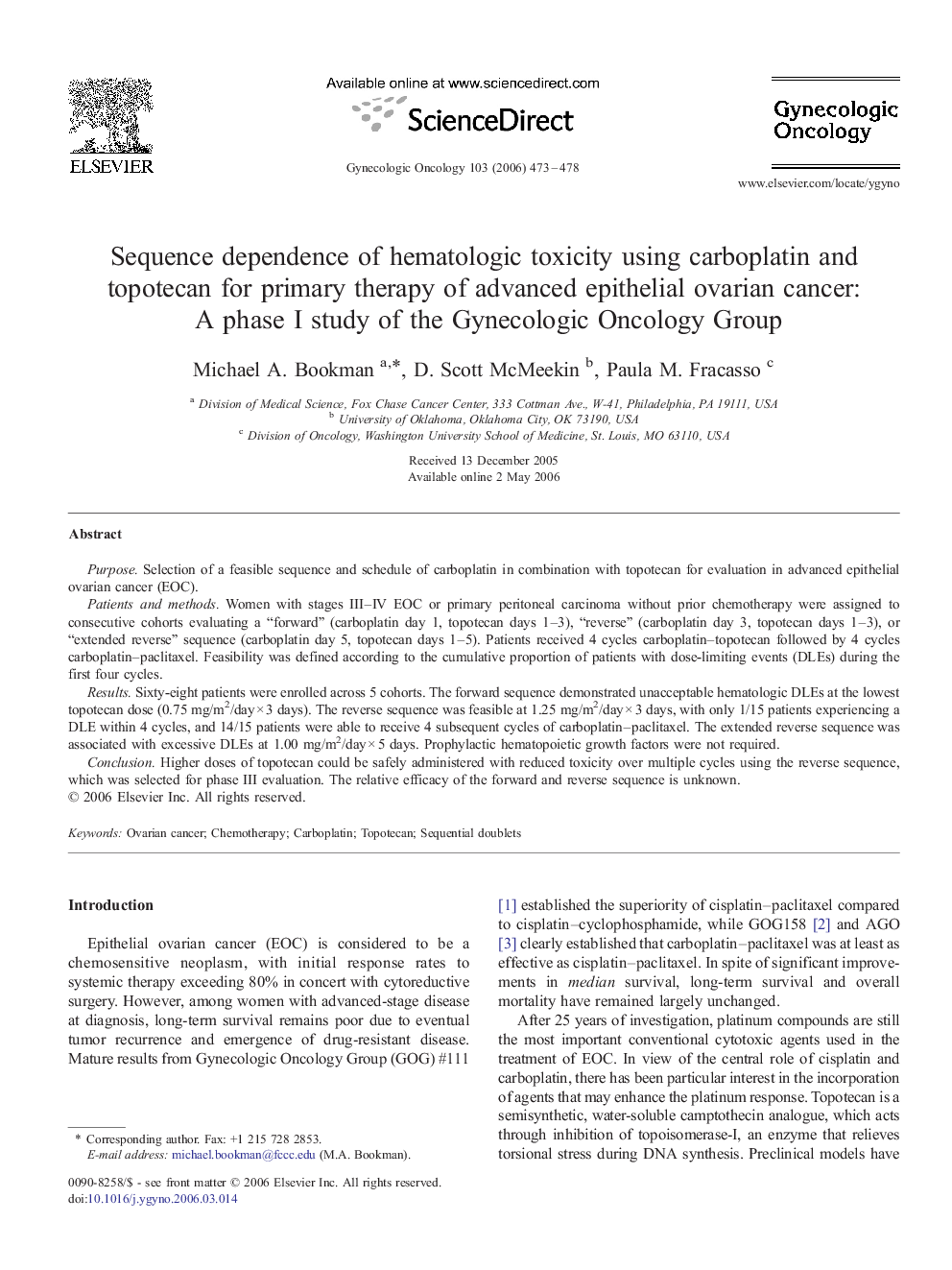| Article ID | Journal | Published Year | Pages | File Type |
|---|---|---|---|---|
| 3943792 | Gynecologic Oncology | 2006 | 6 Pages |
Purpose.Selection of a feasible sequence and schedule of carboplatin in combination with topotecan for evaluation in advanced epithelial ovarian cancer (EOC).Patients and methods.Women with stages III–IV EOC or primary peritoneal carcinoma without prior chemotherapy were assigned to consecutive cohorts evaluating a “forward” (carboplatin day 1, topotecan days 1–3), “reverse” (carboplatin day 3, topotecan days 1–3), or “extended reverse” sequence (carboplatin day 5, topotecan days 1–5). Patients received 4 cycles carboplatin–topotecan followed by 4 cycles carboplatin–paclitaxel. Feasibility was defined according to the cumulative proportion of patients with dose-limiting events (DLEs) during the first four cycles.Results.Sixty-eight patients were enrolled across 5 cohorts. The forward sequence demonstrated unacceptable hematologic DLEs at the lowest topotecan dose (0.75 mg/m2/day × 3 days). The reverse sequence was feasible at 1.25 mg/m2/day × 3 days, with only 1/15 patients experiencing a DLE within 4 cycles, and 14/15 patients were able to receive 4 subsequent cycles of carboplatin–paclitaxel. The extended reverse sequence was associated with excessive DLEs at 1.00 mg/m2/day × 5 days. Prophylactic hematopoietic growth factors were not required.Conclusion.Higher doses of topotecan could be safely administered with reduced toxicity over multiple cycles using the reverse sequence, which was selected for phase III evaluation. The relative efficacy of the forward and reverse sequence is unknown.
